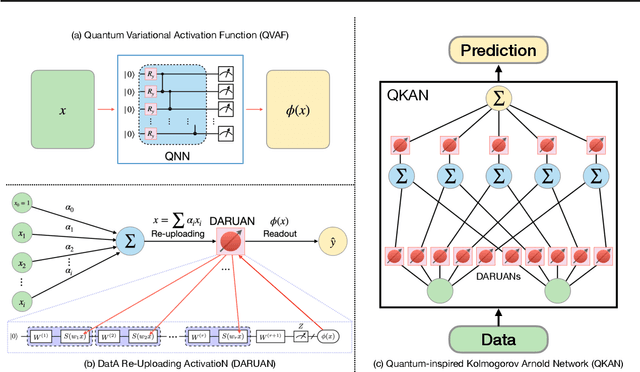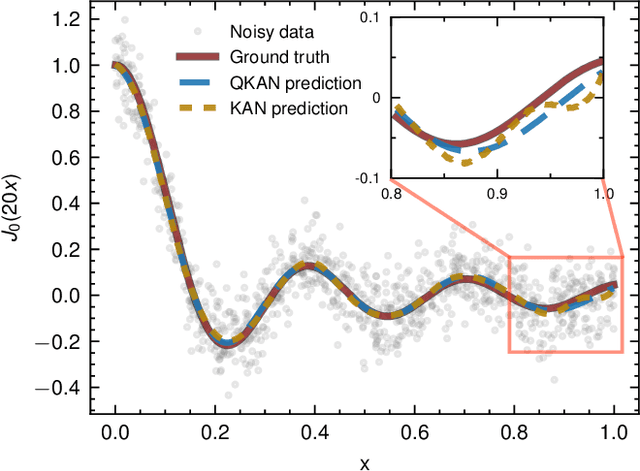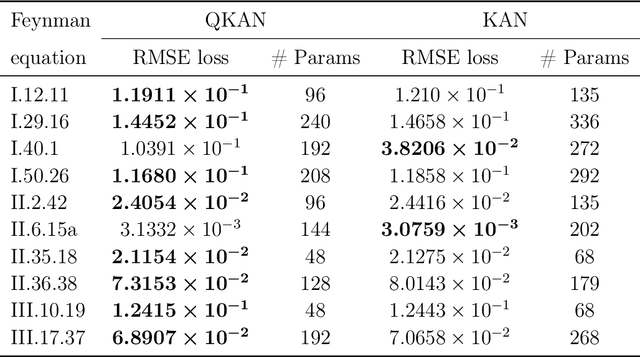Tianlong Chen
A Space-Time Transformer for Precipitation Forecasting
Nov 14, 2025Abstract:Meteorological agencies around the world rely on real-time flood guidance to issue live-saving advisories and warnings. For decades traditional numerical weather prediction (NWP) models have been state-of-the-art for precipitation forecasting. However, physically-parameterized models suffer from a few core limitations: first, solving PDEs to resolve atmospheric dynamics is computationally demanding, and second, these methods degrade in performance at nowcasting timescales (i.e., 0-4 hour lead-times). Motivated by these shortcomings, recent work proposes AI-weather prediction (AI-WP) alternatives that learn to emulate analysis data with neural networks. While these data-driven approaches have enjoyed enormous success across diverse spatial and temporal resolutions, applications of video-understanding architectures for weather forecasting remain underexplored. To address these gaps, we propose SaTformer: a video transformer built on full space-time attention that skillfully forecasts extreme precipitation from satellite radiances. Along with our novel architecture, we introduce techniques to tame long-tailed precipitation datasets. Namely, we reformulate precipitation regression into a classification problem, and employ a class-weighted loss to address label imbalances. Our model scored first place on the NeurIPS Weather4Cast 2025 Cumulative Rainfall challenge. Code and model weights are available: https://github.com/leharris3/satformer
OR-R1: Automating Modeling and Solving of Operations Research Optimization Problem via Test-Time Reinforcement Learning
Nov 12, 2025Abstract:Optimization modeling and solving are fundamental to the application of Operations Research (OR) in real-world decision making, yet the process of translating natural language problem descriptions into formal models and solver code remains highly expertise intensive. While recent advances in large language models (LLMs) have opened new opportunities for automation, the generalization ability and data efficiency of existing LLM-based methods are still limited, asmost require vast amounts of annotated or synthetic data, resulting in high costs and scalability barriers. In this work, we present OR-R1, a data-efficient training framework for automated optimization modeling and solving. OR-R1 first employs supervised fine-tuning (SFT) to help the model acquire the essential reasoning patterns for problem formulation and code generation from limited labeled data. In addition, it improves the capability and consistency through Test-Time Group Relative Policy Optimization (TGRPO). This two-stage design enables OR-R1 to leverage both scarce labeled and abundant unlabeled data for effective learning. Experiments show that OR-R1 achieves state-of-the-art performance with an average solving accuracy of $67.7\%$, using only $1/10$ the synthetic data required by prior methods such as ORLM, exceeding ORLM's solving accuracy by up to $4.2\%$. Remarkably, OR-R1 outperforms ORLM by over $2.4\%$ with just $100$ synthetic samples. Furthermore, TGRPO contributes an additional $3.1\%-6.4\%$ improvement in accuracy, significantly narrowing the gap between single-attempt (Pass@1) and multi-attempt (Pass@8) performance from $13\%$ to $7\%$. Extensive evaluations across diverse real-world benchmarks demonstrate that OR-R1 provides a robust, scalable, and cost-effective solution for automated OR optimization problem modeling and solving, lowering the expertise and data barriers for industrial OR applications.
Beyond Redundancy: Diverse and Specialized Multi-Expert Sparse Autoencoder
Nov 07, 2025



Abstract:Sparse autoencoders (SAEs) have emerged as a powerful tool for interpreting large language models (LLMs) by decomposing token activations into combinations of human-understandable features. While SAEs provide crucial insights into LLM explanations, their practical adoption faces a fundamental challenge: better interpretability demands that SAEs' hidden layers have high dimensionality to satisfy sparsity constraints, resulting in prohibitive training and inference costs. Recent Mixture of Experts (MoE) approaches attempt to address this by partitioning SAEs into narrower expert networks with gated activation, thereby reducing computation. In a well-designed MoE, each expert should focus on learning a distinct set of features. However, we identify a \textit{critical limitation} in MoE-SAE: Experts often fail to specialize, which means they frequently learn overlapping or identical features. To deal with it, we propose two key innovations: (1) Multiple Expert Activation that simultaneously engages semantically weighted expert subsets to encourage specialization, and (2) Feature Scaling that enhances diversity through adaptive high-frequency scaling. Experiments demonstrate a 24\% lower reconstruction error and a 99\% reduction in feature redundancy compared to existing MoE-SAE methods. This work bridges the interpretability-efficiency gap in LLM analysis, allowing transparent model inspection without compromising computational feasibility.
Metacognitive Self-Correction for Multi-Agent System via Prototype-Guided Next-Execution Reconstruction
Oct 16, 2025Abstract:Large Language Model based multi-agent systems (MAS) excel at collaborative problem solving but remain brittle to cascading errors: a single faulty step can propagate across agents and disrupt the trajectory. In this paper, we present MASC, a metacognitive framework that endows MAS with real-time, unsupervised, step-level error detection and self-correction. MASC rethinks detection as history-conditioned anomaly scoring via two complementary designs: (1) Next-Execution Reconstruction, which predicts the embedding of the next step from the query and interaction history to capture causal consistency, and (2) Prototype-Guided Enhancement, which learns a prototype prior over normal-step embeddings and uses it to stabilize reconstruction and anomaly scoring under sparse context (e.g., early steps). When an anomaly step is flagged, MASC triggers a correction agent to revise the acting agent's output before information flows downstream. On the Who&When benchmark, MASC consistently outperforms all baselines, improving step-level error detection by up to 8.47% AUC-ROC ; When plugged into diverse MAS frameworks, it delivers consistent end-to-end gains across architectures, confirming that our metacognitive monitoring and targeted correction can mitigate error propagation with minimal overhead.
Multi-Agent Debate for LLM Judges with Adaptive Stability Detection
Oct 14, 2025



Abstract:With advancements in reasoning capabilities, Large Language Models (LLMs) are increasingly employed for automated judgment tasks. While LLMs-as-Judges offer promise in automating evaluations, current approaches often rely on simplistic aggregation methods (e.g., majority voting), which can fail even when individual agents provide correct answers. To address this, we propose a multi-agent debate judge framework where agents collaboratively reason and iteratively refine their responses. We formalize the debate process mathematically, analyzing agent interactions and proving that debate amplifies correctness compared to static ensembles. To enhance efficiency, we introduce a stability detection mechanism that models judge consensus dynamics via a time-varying Beta-Binomial mixture, with adaptive stopping based on distributional similarity (Kolmogorov-Smirnov test). This mechanism models the judges' collective correct rate dynamics using a time-varying mixture of Beta-Binomial distributions and employs an adaptive stopping criterion based on distributional similarity (Kolmogorov-Smirnov statistic). Experiments across multiple benchmarks and models demonstrate that our framework improves judgment accuracy over majority voting while maintaining computational efficiency.
Quantum Variational Activation Functions Empower Kolmogorov-Arnold Networks
Sep 17, 2025



Abstract:Variational quantum circuits (VQCs) are central to quantum machine learning, while recent progress in Kolmogorov-Arnold networks (KANs) highlights the power of learnable activation functions. We unify these directions by introducing quantum variational activation functions (QVAFs), realized through single-qubit data re-uploading circuits called DatA Re-Uploading ActivatioNs (DARUANs). We show that DARUAN with trainable weights in data pre-processing possesses an exponentially growing frequency spectrum with data repetitions, enabling an exponential reduction in parameter size compared with Fourier-based activations without loss of expressivity. Embedding DARUAN into KANs yields quantum-inspired KANs (QKANs), which retain the interpretability of KANs while improving their parameter efficiency, expressivity, and generalization. We further introduce two novel techniques to enhance scalability, feasibility and computational efficiency, such as layer extension and hybrid QKANs (HQKANs) as drop-in replacements of multi-layer perceptrons (MLPs) for feed-forward networks in large-scale models. We provide theoretical analysis and extensive experiments on function regression, image classification, and autoregressive generative language modeling, demonstrating the efficiency and scalability of QKANs. DARUANs and QKANs offer a promising direction for advancing quantum machine learning on both noisy intermediate-scale quantum (NISQ) hardware and classical quantum simulators.
Transferring Expert Cognitive Models to Social Robots via Agentic Concept Bottleneck Models
Aug 06, 2025Abstract:Successful group meetings, such as those implemented in group behavioral-change programs, work meetings, and other social contexts, must promote individual goal setting and execution while strengthening the social relationships within the group. Consequently, an ideal facilitator must be sensitive to the subtle dynamics of disengagement, difficulties with individual goal setting and execution, and interpersonal difficulties that signal a need for intervention. The challenges and cognitive load experienced by facilitators create a critical gap for an embodied technology that can interpret social exchanges while remaining aware of the needs of the individuals in the group and providing transparent recommendations that go beyond powerful but "black box" foundation models (FMs) that identify social cues. We address this important demand with a social robot co-facilitator that analyzes multimodal meeting data and provides discreet cues to the facilitator. The robot's reasoning is powered by an agentic concept bottleneck model (CBM), which makes decisions based on human-interpretable concepts like participant engagement and sentiments, ensuring transparency and trustworthiness. Our core contribution is a transfer learning framework that distills the broad social understanding of an FM into our specialized and transparent CBM. This concept-driven system significantly outperforms direct zero-shot FMs in predicting the need for intervention and enables real-time human correction of its reasoning. Critically, we demonstrate robust knowledge transfer: the model generalizes across different groups and successfully transfers the expertise of senior human facilitators to improve the performance of novices. By transferring an expert's cognitive model into an interpretable robotic partner, our work provides a powerful blueprint for augmenting human capabilities in complex social domains.
SparseC-AFM: a deep learning method for fast and accurate characterization of MoS$_2$ with C-AFM
Jul 17, 2025Abstract:The increasing use of two-dimensional (2D) materials in nanoelectronics demands robust metrology techniques for electrical characterization, especially for large-scale production. While atomic force microscopy (AFM) techniques like conductive AFM (C-AFM) offer high accuracy, they suffer from slow data acquisition speeds due to the raster scanning process. To address this, we introduce SparseC-AFM, a deep learning model that rapidly and accurately reconstructs conductivity maps of 2D materials like MoS$_2$ from sparse C-AFM scans. Our approach is robust across various scanning modes, substrates, and experimental conditions. We report a comparison between (a) classic flow implementation, where a high pixel density C-AFM image (e.g., 15 minutes to collect) is manually parsed to extract relevant material parameters, and (b) our SparseC-AFM method, which achieves the same operation using data that requires substantially less acquisition time (e.g., under 5 minutes). SparseC-AFM enables efficient extraction of critical material parameters in MoS$_2$, including film coverage, defect density, and identification of crystalline island boundaries, edges, and cracks. We achieve over 11x reduction in acquisition time compared to manual extraction from a full-resolution C-AFM image. Moreover, we demonstrate that our model-predicted samples exhibit remarkably similar electrical properties to full-resolution data gathered using classic-flow scanning. This work represents a significant step toward translating AI-assisted 2D material characterization from laboratory research to industrial fabrication. Code and model weights are available at github.com/UNITES-Lab/sparse-cafm.
Model Editing as a Double-Edged Sword: Steering Agent Ethical Behavior Toward Beneficence or Harm
Jun 25, 2025



Abstract:Agents based on Large Language Models (LLMs) have demonstrated strong capabilities across a wide range of tasks. However, deploying LLM-based agents in high-stakes domains comes with significant safety and ethical risks. Unethical behavior by these agents can directly result in serious real-world consequences, including physical harm and financial loss. To efficiently steer the ethical behavior of agents, we frame agent behavior steering as a model editing task, which we term Behavior Editing. Model editing is an emerging area of research that enables precise and efficient modifications to LLMs while preserving their overall capabilities. To systematically study and evaluate this approach, we introduce BehaviorBench, a multi-tier benchmark grounded in psychological moral theories. This benchmark supports both the evaluation and editing of agent behaviors across a variety of scenarios, with each tier introducing more complex and ambiguous scenarios. We first demonstrate that Behavior Editing can dynamically steer agents toward the target behavior within specific scenarios. Moreover, Behavior Editing enables not only scenario-specific local adjustments but also more extensive shifts in an agent's global moral alignment. We demonstrate that Behavior Editing can be used to promote ethical and benevolent behavior or, conversely, to induce harmful or malicious behavior. Through comprehensive evaluations on agents based on frontier LLMs, BehaviorBench shows the effectiveness of Behavior Editing across different models and scenarios. Our findings offer key insights into a new paradigm for steering agent behavior, highlighting both the promise and perils of Behavior Editing.
EQA-RM: A Generative Embodied Reward Model with Test-time Scaling
Jun 12, 2025Abstract:Reward Models (RMs), vital for large model alignment, are underexplored for complex embodied tasks like Embodied Question Answering (EQA) where nuanced evaluation of agents' spatial, temporal, and logical understanding is critical yet not considered by generic approaches. We introduce EQA-RM, a novel generative multimodal reward model specifically architected for EQA, trained via our innovative Contrastive Group Relative Policy Optimization (C-GRPO) strategy to learn fine-grained behavioral distinctions. The generative nature of EQA-RM provides interpretable, structured reward feedback (beyond simple scalars), uniquely enabling test-time scaling to dynamically adjust evaluation granularity, from concise scores to detailed critiques of reasoning and grounding, at inference without retraining. Concurrently, we introduce EQARewardBench, a new benchmark built on OpenEQA for standardized EQA reward model assessment. Demonstrating high sample efficiency, EQA-RM (fine-tuning Qwen2-VL-2B-Instruct) achieves 61.9\% accuracy on EQA-RM-Bench with only 700 samples, outperforming strong proprietary baselines, including Gemini-2.5-Flash, GPT-4o, Claude-3.5-Haiku, and open-sourced state-of-the-art models such as RoVRM and VisualPRM. The code and dataset can be found here https://github.com/UNITES-Lab/EQA-RM.
 Add to Chrome
Add to Chrome Add to Firefox
Add to Firefox Add to Edge
Add to Edge